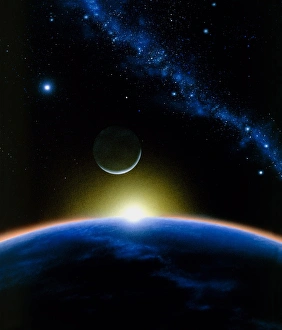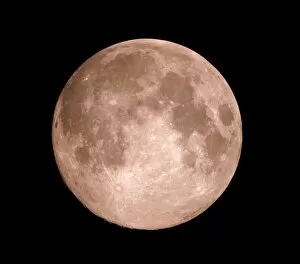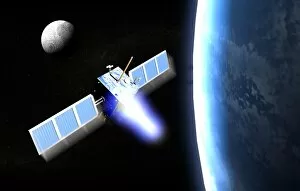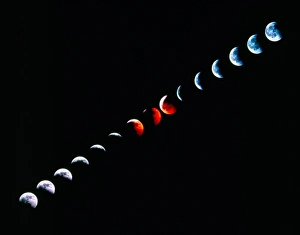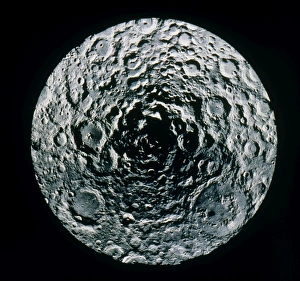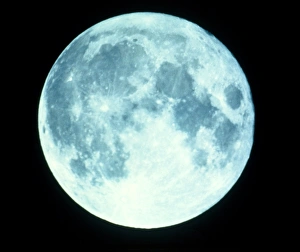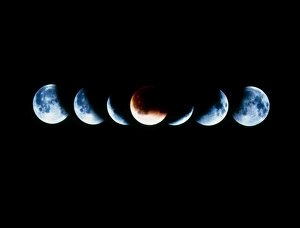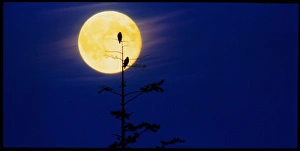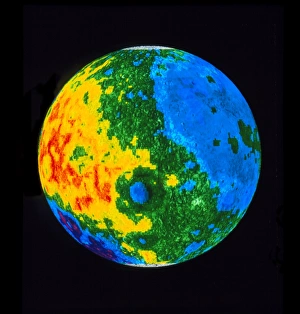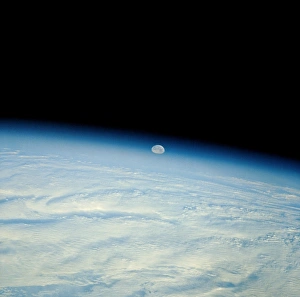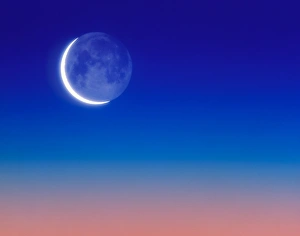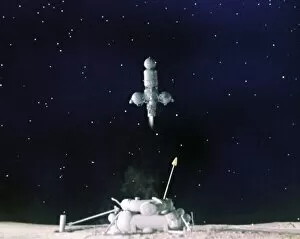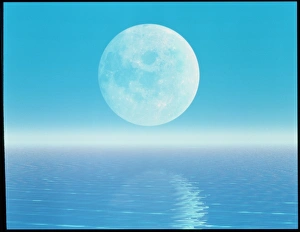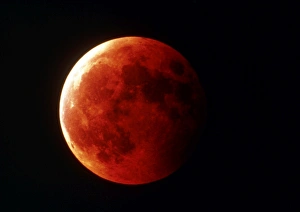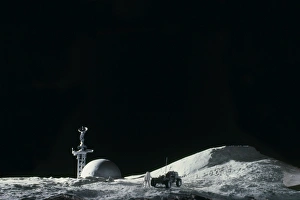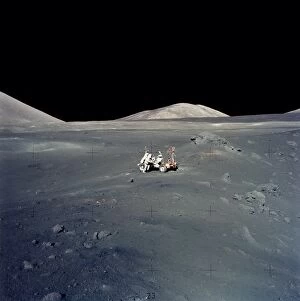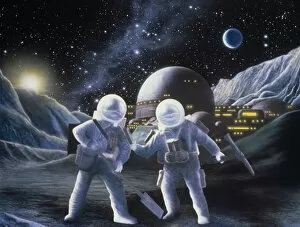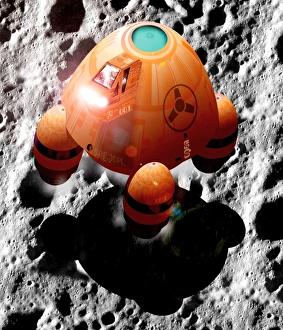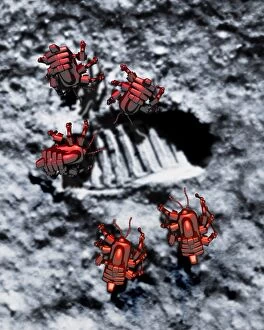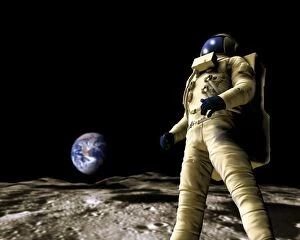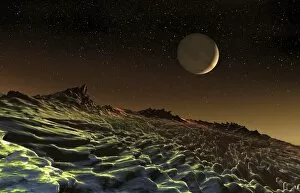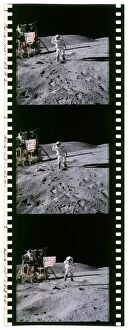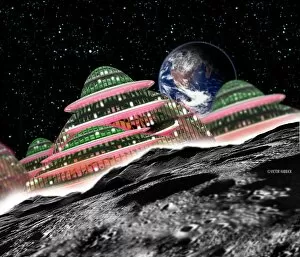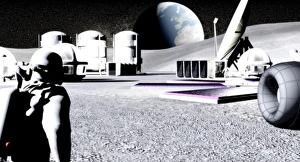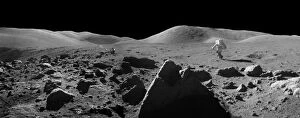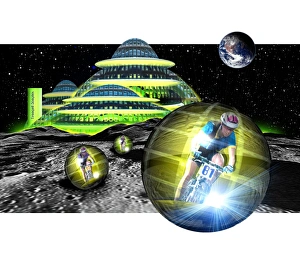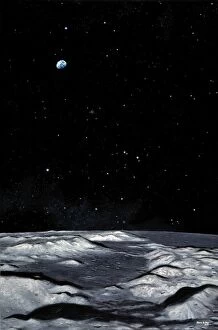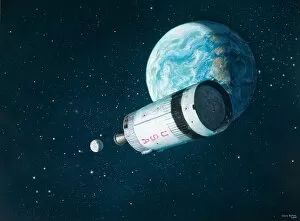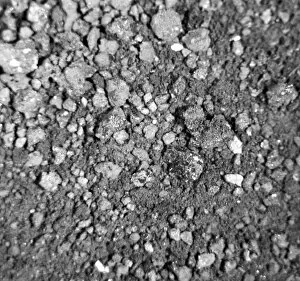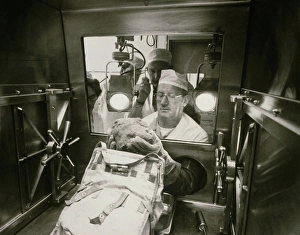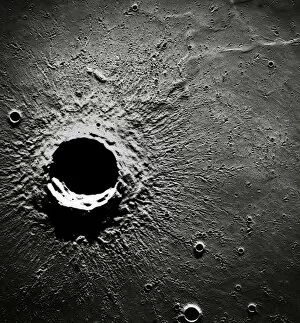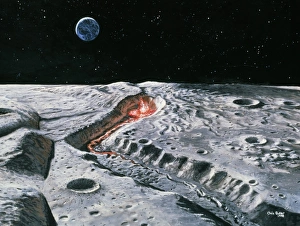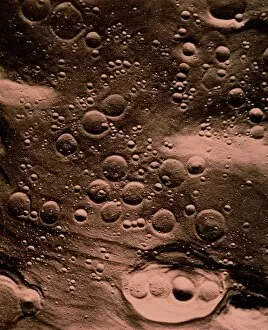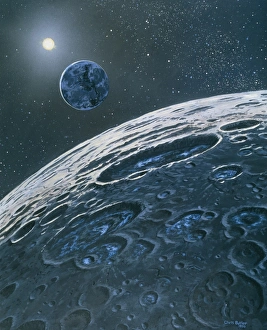Lunar Collection (page 44)
"Lunar: A Celestial Journey Unveiling the Mysteries of Earth's Enigmatic Neighbor" Earthrise over Moon
All Professionally Made to Order for Quick Shipping
"Lunar: A Celestial Journey Unveiling the Mysteries of Earth's Enigmatic Neighbor" Earthrise over Moon, Apollo 8: Witnessing the breathtaking beauty of our home planet rising above the lunar horizon, captured by the courageous Apollo 8 astronauts. Earthrise photograph, artwork: An awe-inspiring portrayal of that iconic moment when humanity first glimpsed the delicate blue orb amidst a desolate lunar landscape. Coming from Evening Church, 1830 (1947): Samuel Palmer's evocative painting transports us to a moonlit evening where ethereal light bathes an ancient church in mystical radiance. Full Moon: Illuminating the night sky with its radiant glow, casting enchantment and stirring emotions since time immemorial. Apollo 17 astronaut: Standing on the surface of another world, an intrepid explorer gazes at distant horizons while leaving indelible footprints as testament to human ingenuity and ambition. Astronaut footprints on the Moon: The imprints left behind by pioneers who ventured beyond our earthly confines serve as a reminder of mankind's audacious quest for knowledge and exploration. Amazing Stories Scifi Magazine Cover with Hidden Lunar City: Unveiling fantastical visions of hidden lunar metropolises through captivating science fiction artistry that sparks imagination and wonder. Early map of the Moon, 1810: Delving into history reveals intricate cartographic depictions that reflect humanity's fascination with unraveling lunar mysteries long before setting foot there ourselves. Phases of the Moon: From crescent slivers to full luminosity and back again—a celestial dance reminding us of nature's cyclical rhythms and eternal cosmic ballets overhead. Optical image of a waxing gibbous moon: Through advanced technology capturing every detail in stunning clarity, we marvel at this intermediary phase between half-moon splendor and full lunar radiance. Waning crescent Moon.

